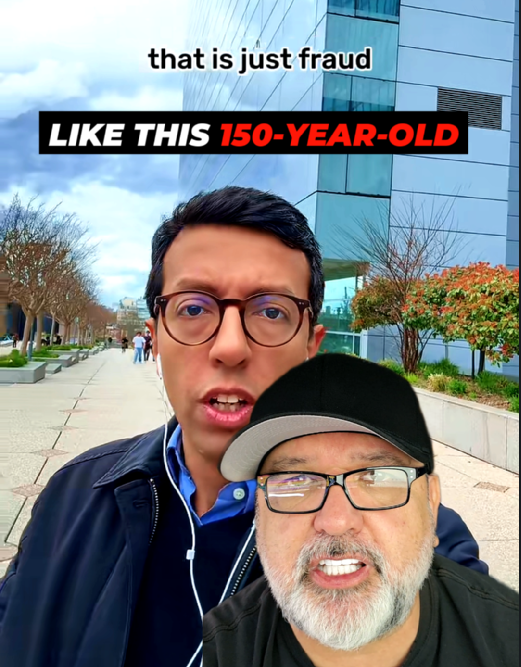The Great Divide – How Corporations Profit by Keeping America Divided
America is a nation divided. In our homes, workplaces, and communities, we argue over political ideologies, debating left versus right, red versus blue. Yet, while we’re busy clashing over cultural and political issues, something insidious is happening behind the scenes. Big corporations are reaping enormous profits by exploiting this division, quietly maintaining a system that prioritizes their wealth over the well-being of the workers who drive their success. It’s time to expose this strategy for what it is: a deliberate ploy to keep us distracted while they consolidate power and wealth.
Playing Both Sides: A Winning Strategy for Corporations
Corporations don’t have political allegiances. Their loyalty lies in profits. That’s why they donate to both Democrats and Republicans, ensuring influence no matter who’s in power. They frame themselves as champions of social progress to appeal to liberals while lobbying for deregulation and tax cuts that align with conservative priorities.
Take Amazon, for example. Publicly, the company champions environmental sustainability and diversity, aligning with progressive values. But behind closed doors, Amazon spends millions fighting unionization efforts and ensuring tax policies favor corporate profits over public services. Similarly, Walmart has been a significant donor to candidates across the political spectrum while consistently opposing wage increases and labor protections.
This dual strategy allows corporations to protect their interests while Americans stay preoccupied with partisan debates. We’re left arguing over ideologies, while CEOs and shareholders laugh all the way to the bank.
The Numbers Tell the Real Story

Let’s look at how corporations distribute their wealth:
- Between 2003 and 2012, S&P 500 companies allocated 91% of their earnings
 to stock buybacks and dividends, enriching shareholders and executives.
to stock buybacks and dividends, enriching shareholders and executives.- Only 5% of profits went to workers in the form of wages and benefits.
This isn’t just theory. The average CEO now earns 291 times what their typical employee makes. In 1965, that ratio was 21-to-1. Over the decades, corporate profits have soared, yet worker wages have stagnated, even as productivity skyrocketed.
Real-World Examples of Exploitation
Consider these companies:
- Lowe’s: Between 2019 and 2023, Lowe’s spent over $42 billion on stock buybacks, enriching shareholders. Meanwhile, employees received minimal wage increases, often struggling to afford basic living expenses.
- Boeing: Once a symbol of American innovation, Boeing prioritized cost-cutting and shareholder returns over worker safety. This culture of profit-first led to catastrophic failures with the 737 Max, showing how the pursuit of wealth can jeopardize lives.
- Amazon: The tech giant’s warehouse workers endure harsh conditions while its executives and shareholders reap billions. Despite massive profits, the company has aggressively fought union efforts that would give workers a voice.

Public Opinion: People Are Waking Up
Polling shows that Americans are increasingly aware of corporate greed. A Pew Research study found that most Americans believe large corporations make excessive profits and contribute to widening income inequality. Yet, public frustration often fails to translate into collective action, partly because corporate messaging keeps us divided.
For example, corporations fund media outlets and campaigns that amplify partisan divisions, ensuring the focus stays on cultural issues rather than economic inequality. This tactic keeps workers from uniting against their common adversary: a system that values profits over people.
Why Division Benefits Corporations
Division weakens collective action. When workers are fragmented by political and cultural differences, they’re less likely to organize for better wages, benefits, and working conditions. This is why union membership has declined sharply in recent decades, even as income inequality has grown. Corporations have spent millions on anti-union campaigns, convincing workers that collective bargaining is against their best interests.
A Call to Action
The solution lies in unity. Workers across the political spectrum must recognize that their true power lies in collective action. By supporting unions, demanding transparency in corporate lobbying, and voting for policies that prioritize workers over shareholders, we can begin to shift the balance of power.
It’s time to stop letting corporations divide us. We need to move beyond partisan squabbles and focus on the bigger picture: a system that ensures the wealth we create is shared fairly. Together, we can demand better. But first, we must see through the distractions and understand who really profits from our division.
This isn’t a left or right issue. It’s a workers’ issue. And it’s time we all start paying attention.
Sign up for our newsletter to stay up to date on what's happening with the America Project and our Connect the Dots Campaign!




Post Comment